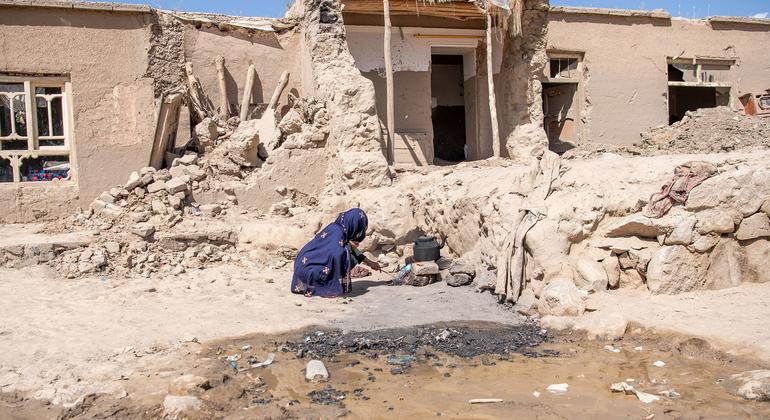Eastern Afghanistan rocked by deadly storms; dozens dead, hundreds homeless


Nangarhar province, which includes the capital Jalalabad, is reported to be the worst affected. The province also suffered devastating floods in April. Other affected provinces include Badakhshan, Kunar, Laghman and Nuristan.
At a daily press briefing in New York, UN Spokesperson Stephane Dujarric reported that a reception center at Nangarhar’s Torkham border crossing, a major entry point for people returning from Pakistan, was severely affected by the storm.
“While assessments are underway, Our humanitarian partners have deployed nine mobile health and nutrition teams, while our health partners have provided medical supplies. to Nangahar Regional Hospital and Fatima Zuhra Hospital.”
Urgent need
According to to the United Nations Office for the Coordination of Humanitarian Affairs (OCHA), water, sanitation and hygiene (WASH) facilities, along with 400 tents at a nearby camp, were damaged or destroyed.
Initial reports indicate that affected households are in dire need of access to food, shelter, health and WASH services. It is believed that forty people were killed and more than 340 were injured.
The safety and health risks are exacerbated as many flood-affected families seek shelter outside their destroyed or damaged homes. There is also an urgent need for mental health and psychosocial support services for the most affected families.
The danger of unexploded bombs
United Nations Refugee Agency, United Nations High Commissioner for Refugees, reported Some areas affected by the floods are feared to be contaminated with unexploded ordnance (UXO) or mines, posing a serious risk to people.
The report also said most families had lost their source of income, potentially pushing them into a more vulnerable situation, while women and girls said they felt unsafe at water points, toilets, firewood collection areas and open spaces without shelter.
Shortage of resources
Mr. Dujarric also stressed the urgent need for additional funding to support those affected.
“So far, we have received about $720 million – less than a quarter of what we need for our $3 billion humanitarian appeal for Afghanistan this year,” he said.


